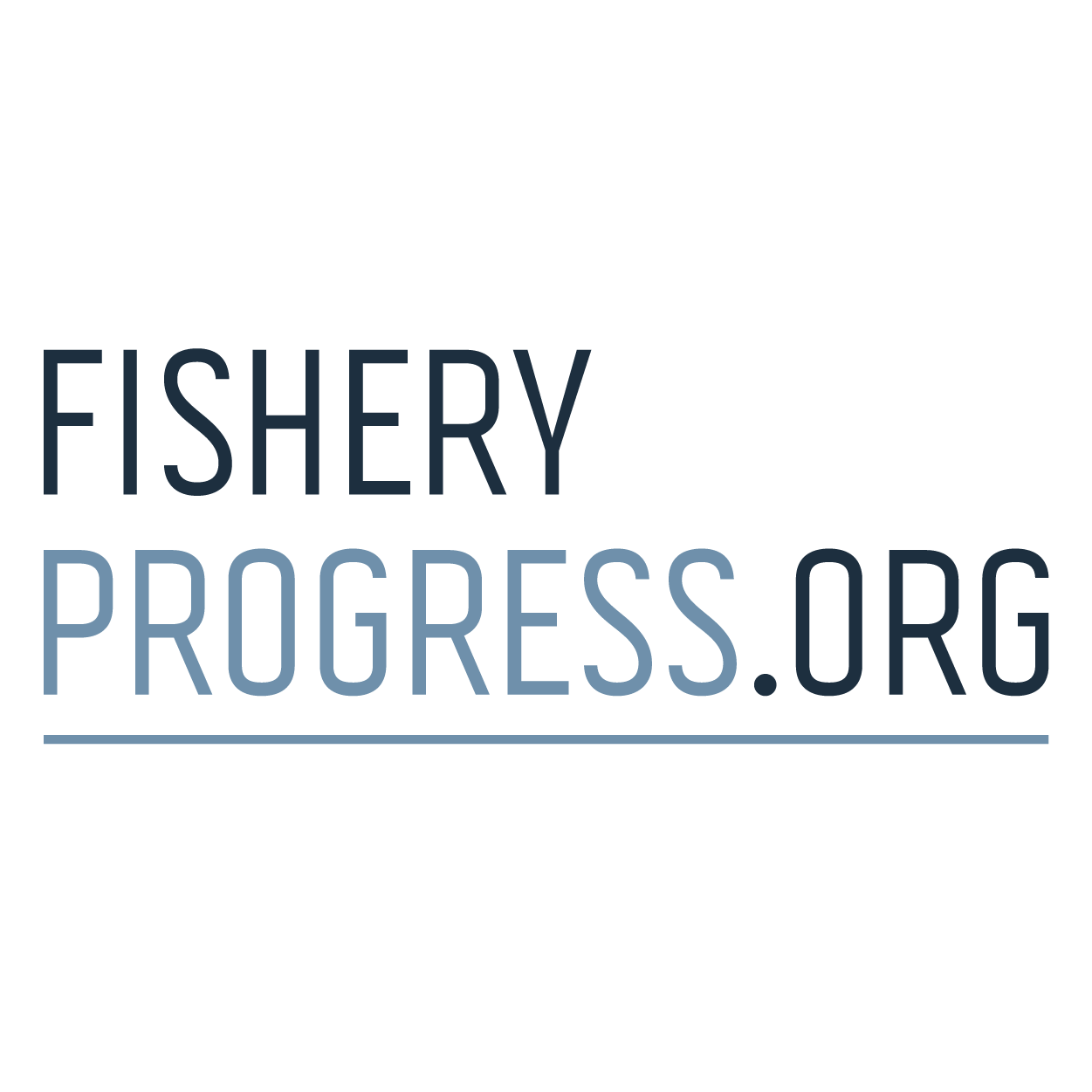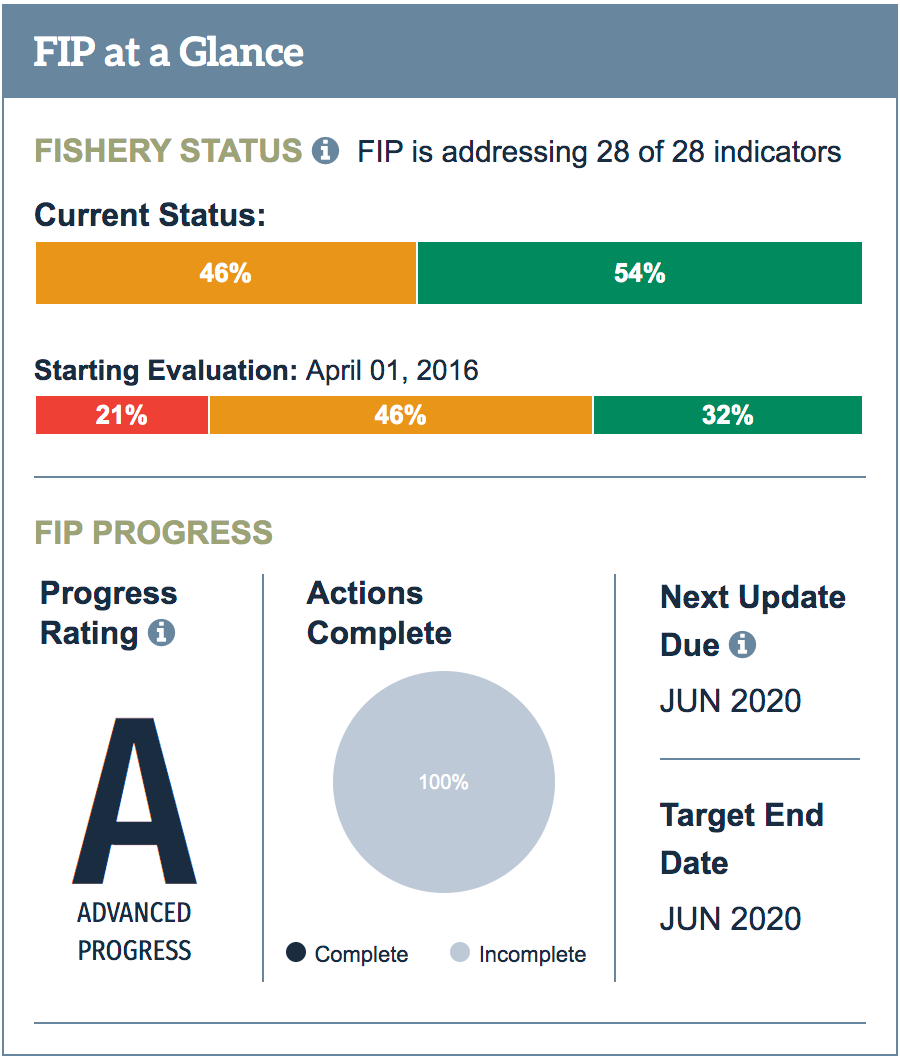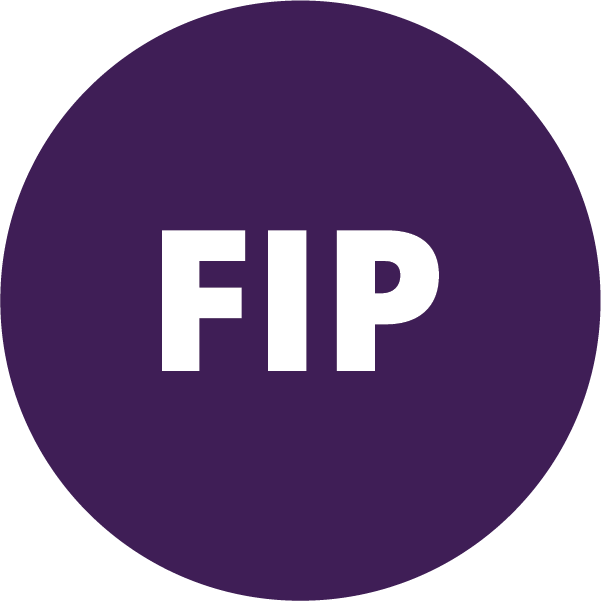A FIP is a multi-stakeholder effort to address environmental challenges in a fishery. FIPs utilize the power of the private sector to incentivize positive changes toward sustainability in the fishery and seek to make these improvements endure through policy change. The Conservation Alliance for Seafood Solutions outlined the core elements of a FIP in guidelines that can be accessed here.
As the number of FIPs around the world has grown, businesses and conservation organizations needed an easier way to access consistent, credible information about FIP progress. FisheryProgress was launched in October 2016 to solve this issue. The website gives a range of information about global FIPs from a snapshot of progress and opportunities to get involved to detailed evidence for improvements.
What makes FisheryProgress different?
- FIPs must report progress on their workplan every 6 months
- All projects measure progress against the same set of indicators
- FisheryProgress is open access to all FIPs
- FIP implementers upload their own information
- All information is reviewed before it is published on the website (FIP Review Guidelines can be accessed here)
Why Should Businesses Use FisheryProgress?
Understanding the Status of a FIP
The Difference Between Basic and Comprehensive FIP
How to Tell If a FIP is Making Progress
Products from FIPs on FishChoice
Why Should Businesses Use FisheryProgress?
Seafood buyers provide a direct economic incentive for fisheries by offering market access while improvements are being made in the FIP. By participating in or supporting FIPs that are making progress and meeting their targets, retailers and processors are able to maintain or widen the diversity of their seafood offerings, while enhancing their reputation for responsible business practices.
FisheryProgress helps seafood companies make FIP sourcing/engagement decisions based on their own priorities and policies. There are several key pieces of information on each FIP profile that seafood companies will want to understand and consider, which are outlined below.
Understanding the Status of a FIP
There are active, inactive, prospective, and completed FIPs listed on FisheryProgress.
Active FIPs are currently working to achieve their objectives.
Inactive FIPs ended before achieving their goals or failed to meet FisheryProgress requirements for progress reporting. This could include failing to submit reports for one year or failing to report changes in fishing practices or fishery management, or improvements on the water, within three years. For inactive FIPs, buyers can contact the FIP lead or their suppliers who were engaged in the FIP to understand why the FIP is inactive, and if relevant, encourage the FIP to become active again.
Prospective FIPs are in stage 0 (FIP identification) or stage 1 (FIP development), and intend to meet the requirements for basic or comprehensive FIPs and complete stage 2 within one year. Prospective FIPs are listed on FisheryProgress in order to increase transparency about new FIPs that are being developed. For prospective FIPs, buyers can contact the FIP lead or their suppliers who are engaged in the FIP and encourage them to become an active FIP.
Completed FIPs have achieved all of their objectives. FisheryProgress does not continue to review FIPs’ progress or data once marked as completed on the site.
The Difference Between Basic and Comprehensive
FisheryProgress tracks two types of active FIPs – basic and comprehensive. Some companies include requirements about FIP type in their procurement policies.
Basic FIPs are a good entry point for fisheries to begin addressing specific environmental challenges to improve their performance against the Marine Stewardship Council Fisheries Standard. Basic FIPs complete a needs assessment to understand the challenges in the fishery.
The primary differences between basic and comprehensive fishery improvement projects are the level of scoping to inform development of the workplan, the objectives, and the verification required.
Comprehensive FIPs aim to address all of the fishery’s environmental challenges necessary to achieve a level of performance consistent with an unconditional pass of the MSC Fisheries Standard. Comprehensive FIPs engage a party experienced with applying the MSC standard to complete an MSC pre-assessment to understand the challenges in the fishery and must have independent, in-person audits of progress against the MSC standard every three years.
Some FIPs change from basic to comprehensive over time, and when appropriate, seafood business can play an important role in encouraging basic FIPs to transition to comprehensive.
How to Tell if a FIP is Making Progress
How a fishery’s scores change over time is an indicator of how the fishery is improving. A summary of how the fishery’s scores have changed since the start of the FIP is available on FisheryProgress in the “FIP at a Glance” section on the Overview tab. You can access more detailed information for each FIP on the Improvement Progress tab.
Reviewing the progress the FIP is making against its workplan is another indicator of the FIP’s progress. On FisheryProgress, a FIP reports all progress against their workplan on the Actions Progress tab. This includes the results of FIP actions and tasks. FIP actions are listed as Completed, On Track, or Behind Schedule. Narrative updates are available by clicking on the Action Name.
The FIP progress rating reflects the rate of progress in the FIP against specific time benchmarks. Each FIP has an A - E progress rating associated with it. See the Sustainable Fisheries Partnership (SFP) FIP Evaluation Tool for more information about how the progress ratings are derived.
Products from FisheryProgress FIPs on FishChoice
| Symbol | Summary | Definition |
| Fishery Improvement Project (FIP) on FisheryProgress | Identified seafood source is currently in an active basic or comprehensive fishery improvement project (FIP) on FisheryProgress.org and the supplier identified for the product is listed as a participant on the associated FisheryProgress.org FIP profile.* |



